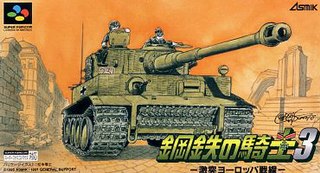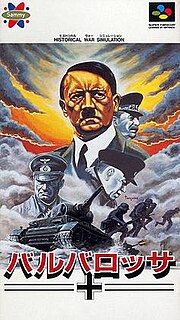Asmik Ace, Inc., formerly Asmik Ace Entertainment, Inc. is a Japanese film production and distribution company. In past, the company has distributed video games. It was formed in 1997 through a merger between the Asmik Corporation and Ace Entertainment, both of Japan. The name Asmik comes from its three founding companies: Ask, Sumitomo and Kodansha. The company is headquartered on the third floor of the Lapiross Roppongi building in Minato, Tokyo, and is a wholly owned division of Jupiter Telecommunications (J:COM).

The PC-8800 series, commonly shortened to PC-88, are a brand of Zilog Z80-based 8-bit home computers released by Nippon Electric Company (NEC) in 1981 and primarily sold in Japan
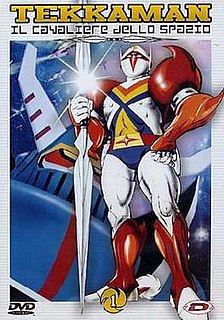
Tekkaman: The Space Knight is an anime produced by Tatsunoko Productions in 1975. A short-lived English adaptation aired in the US in 1984. The first 13 episodes streamed in Japanese with English subtitles on Anime Sols as of spring 2013 exclusively in North America, but the website is now defunct. As of 2016, all 26 episodes are streaming on Viewster in several countries. In the 1990s, it was followed by the much more popular Tekkaman Blade, which was dubbed in the U.S. by Saban as Teknoman.
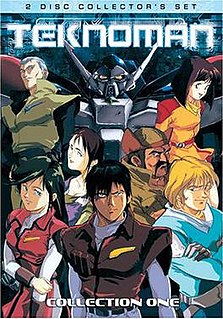
Tekkaman Blade is a 1992 Japanese anime television series produced by Tatsunoko Production and Sotsu Agency. The series was directed by Hiroshi Negishi and written by Mayori Sekijima and Satoru Akahori. The story follows an organization called the Space Knights and their war against aliens known as the Radam. The Space Knights are assisted by Takaya Aiba, who has the ability to transform into an armored warrior known as Tekkaman Blade.

The PC-9800 series, commonly shortened to PC-98 or 98, is a lineup of Japanese 16-bit and 32-bit personal computers manufactured by NEC from 1982 through 2000. The platform established NEC's dominance in the Japanese personal computer market, and by 1999, more than 18 million PC-98 units had been sold.
Bokosuka Wars (ボコスカウォーズ) is a 1983 action-strategy role-playing video game developed by Kōji Sumii (住井浩司) and released by ASCII for the Sharp X1 computer, followed by ports to the MSX, FM-7, NEC PC-6001, NEC PC-8801 and NEC PC-9801 computer platforms, as well as an altered version released for the Family Computer console and later the Virtual Console service. It revolves around a leader who must lead an army in phalanx formation across a battlefield in real-time against overwhelming enemy forces while freeing and recruiting soldiers along the way, with each unit able to gain experience and level up through battle. The player must make sure that the leader stays alive, until the army reaches the enemy castle to defeat the leader of the opposing forces.
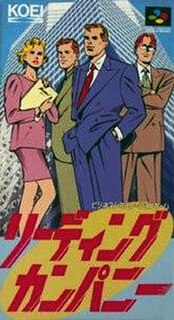
Leading Company (リーディングカンパニー) is a construction-oriented strategy video game that was released for both the Super Famicom, NEC PC-9801, Sharp X68000 and FM Towns.

Top Management is a multiplatform business simulation video game that turns the player into a highly respected corporate title holder.
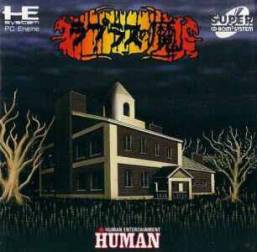
Laplace no Ma is a Japanese video game released in 1987 for the NEC PC-8801 and NEC PC-9801. The game was also ported to Sharp X68000, MSX, the SNES and TurboGrafx-CD.
Emit is an adventure sound novel video game released for the FM Towns, Macintosh, Windows, PC-9801, Sega Saturn, Super Famicom, 3DO, and PlayStation developed and published by Koei. It was designed to teach Japanese students more about English, and played the audio CD back at particular times using a peripheral called Voice-Kun, an IR emitter that could command the CD to change tracks and play them.

Daisenryaku is a series of war strategy video games by SystemSoft and SystemSoft Alpha in Japan. The series debuted in Japan in 1985 with Gendai Daisenryaku(現代大戦略, Modern Great Strategy) exclusively for the NEC PC-98. Games in the franchise have been released for many platforms including the PC-88, X1, FM-7, MSX, Famicom, Mega Drive, Turbo CD, Game Boy, Game Gear, Super Famicom, Sega Saturn, Dreamcast, Game Boy Advance, Nintendo DS, PlayStation, Playstation 2, PlayStation Portable, Playstation 3, PlayStation Vita, PlayStation 4, Windows, Macintosh and other mobile devices.

Dragon Slayer: The Legend of Heroes II is a role-playing video game developed by Nihon Falcom Corporation, part of the Dragon Slayer series and the second entry in the sub-series The Legend of Heroes. It was first released in 1992 for the NEC PC-8801. Over the next few years, it was also ported to the NEC PC-9801, FM Towns, PC Engine, Mega Drive, Super Famicom and MS-DOS.

Lord Monarch (ロードモナーク) is a real-time strategy war game by Nihon Falcom. The game is considered to be the seventh installment in the Dragon Slayer series. It was originally released in 1991 for the NEC PC-9801, ported 1992 to the Super Famicom and 1994 to the Sega Mega Drive. During 1997, Lord Monarch was remade for Windows as Lord Monarch Online and released for free in both Japanese, and for the first time, English.

Iron Commando: Koutetsu no Senshi is a beat 'em up video game developed by Arcade Zone released on February 10, 1995 in Japan for the Super Famicom. A version for Microsoft Windows was published by Piko Interactive in 2016 who also published the SNES version worldwide on January 30, 2017.
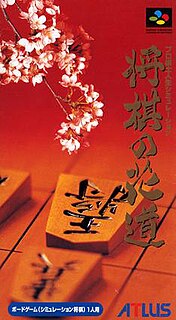
Pro Kishi Jinsei Simulation: Shōgi no Hanamichi is a shogi (将棋) video game, developed by Access and published by Atlus, which was released exclusively in Japan in 1996.
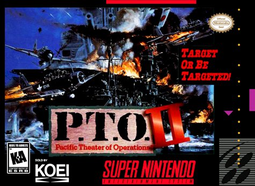
P.T.O. II, released as Teitoku no Ketsudan II (提督の決断II) in Japan, is a Koei strategy video game that depicts the conflict between the USA and Japan during World War II. The video game is a sequel to P.T.O. It was originally released in 1993 for the NEC PC-9801 and had been ported to various platforms since, such as the Super Nintendo Entertainment System.
Brandish (ブランディッシュ) is a series action role-playing video games by Nihon Falcom.


